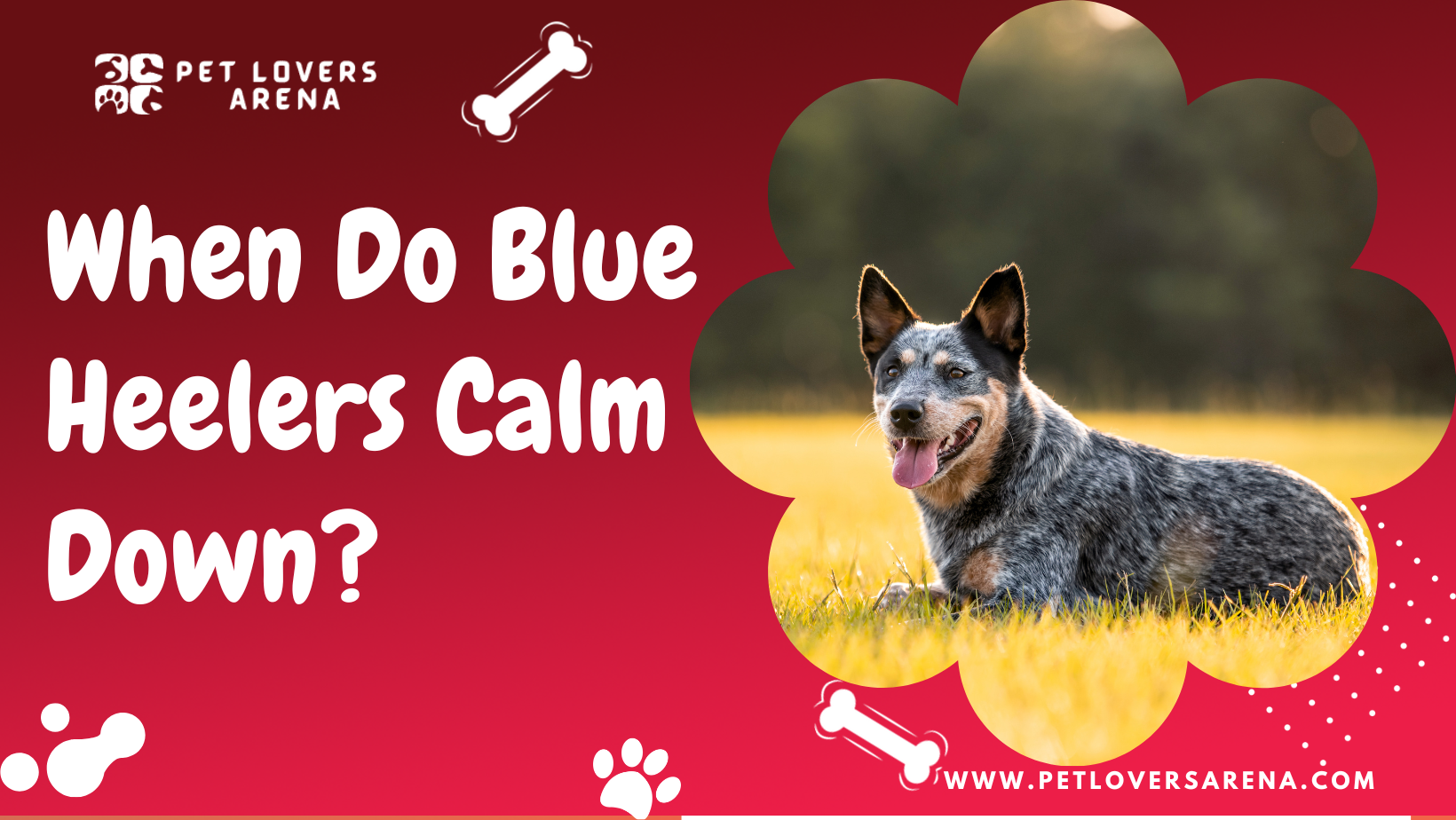Having a Blue Heeler can be overwhelming due to its playfulness. Even after it’s grown and become an adult dog, the playfulness remains.
For this reason, most dog owners are left wondering when do Blue Heelers ever calm down? It’s good to have in mind that a Blue Heeler is a cattle dog.
Its role is to be active in herding. So when getting it as a pet, you have to be ready to maintain its activeness. A Blue Heeler calms down at the age of four to six years. Before that, you will have to deal with its aggressiveness. In this article, you will learn why the Blue Heeler takes such a long time to calm down and how you can help it to calm down.
Personality
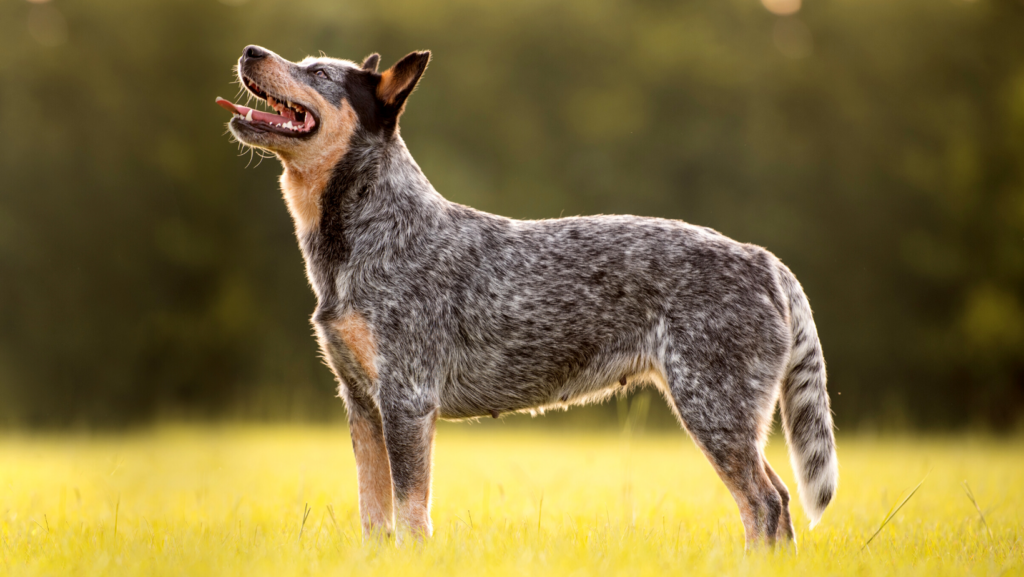
The Blue Heeler is an energetic breed that inherits some of its character from the Dingo. They are also affectionate and get attached to their owner. Apart from that, they are loyal.
In case you are living in a small apartment, getting a Blue Heeler is a bad idea. For a Blue Heeler to remain calm, it needs to get enough exercise. Apart from that, it is very playful and might end up breaking things in the house.
Blue Heeler, also known as the Australian Heeler, Queensland Heeler, and the Halls Heeler, make a perfect guard dog. Its loyal character and protective nature make it perfect.
Temperament
Blue Heeler, compared to other dogs, is a tough dog both mentally and physically. In 2007 a test was done to test the toughness of the Blue Heeler and other cattle dogs. The dogs were engaged in training sessions, which took around four hours. The dogs were still active and still enthusiastic by the end of the session.
During the mustering session, the temperatures were up to 38 degrees. Apart from that, the dogs were able to cover 20 miles in a short time.
Aggressive
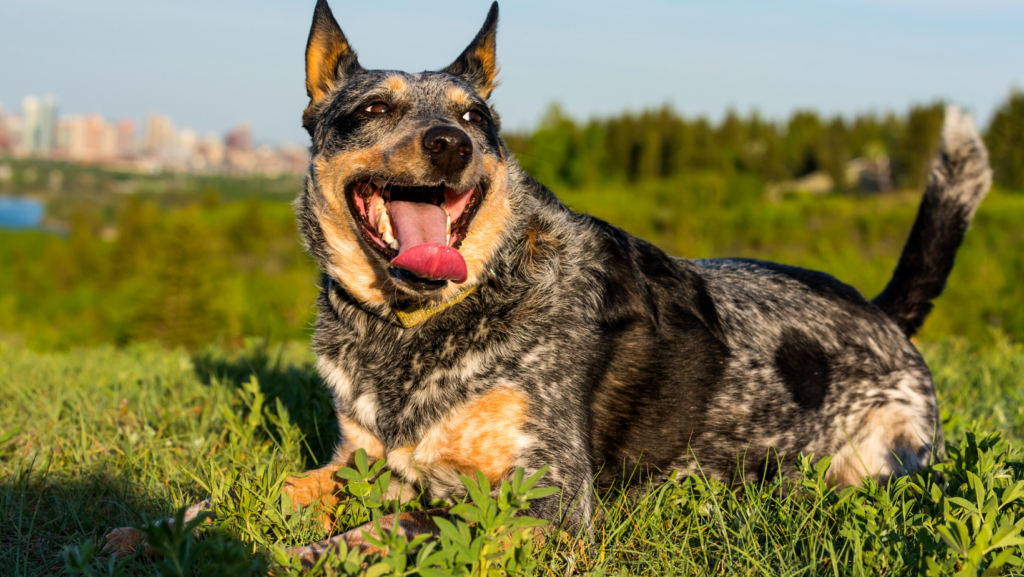
As seen above, the Blue Heelers are a bit aggressive when compared to other dogs. They are territorial, and when they see you getting in their territory, they get aggressive and can even attack you in extreme cases.
They are wary when it comes to strangers. The trait is not very good for a pet dog, but if it is a guard dog, it is perfect as you are sure there will be no unwanted guest in your home.
To help them with the over-aggressive trait, take them out to socialize. That way they get comfortable with more new human faces and dogs.
Active
They are active dogs. They are on their feet most times in a day, running from one place to another. It can be exhausting for new owners, but with enough training and exercises, your dog will learn to calm down.
Protective
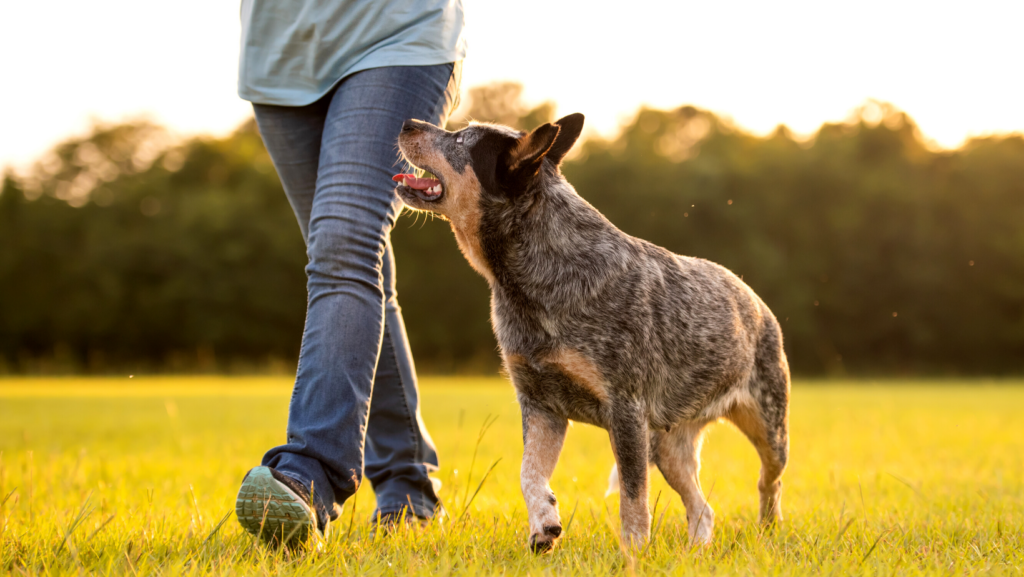
Blue Heelers get attached to their owners. After that, they get very protective and get aggressive if a stranger or another dog approaches the owner. This trait makes them perfect watchdogs. At times they can get overprotective, and that’s why they need training and socialization.
Independent
Blue Heelers are not your regular lap dogs. They are independent as they spend the most time on their playing and running around.
Experience Separation Anxiety
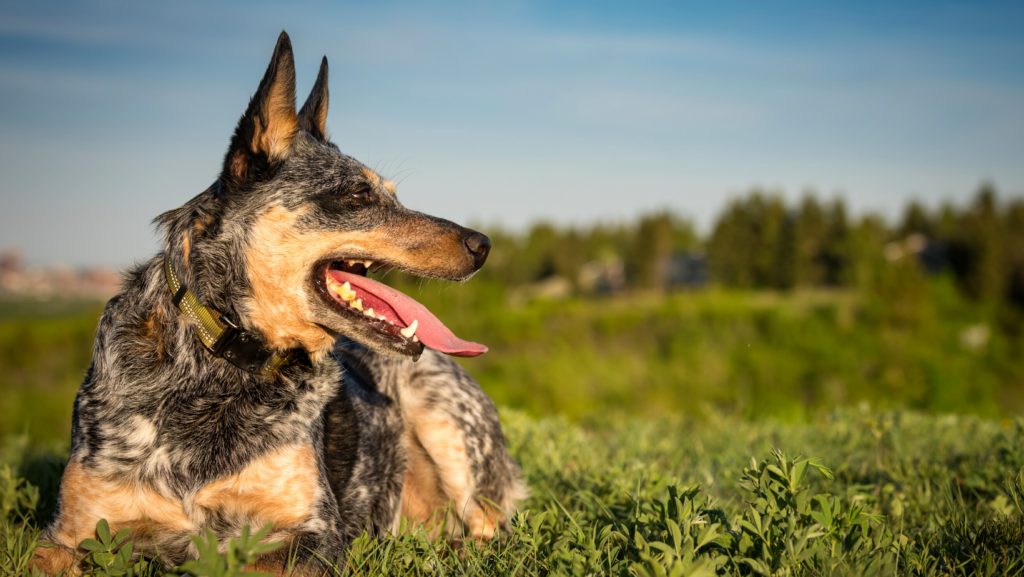
Due to how they are loyal, they get attached to their owners more than other dogs. Another reason is they are pack animals and don’t know how to survive on their own. Once they get separated from their owners or other dogs they were living with, they suffer separation anxiety.
How To Calm Your Blue Heeler
For your Blue Heeler to remain calm, there are activities you need to involve it in, including:
Exercise
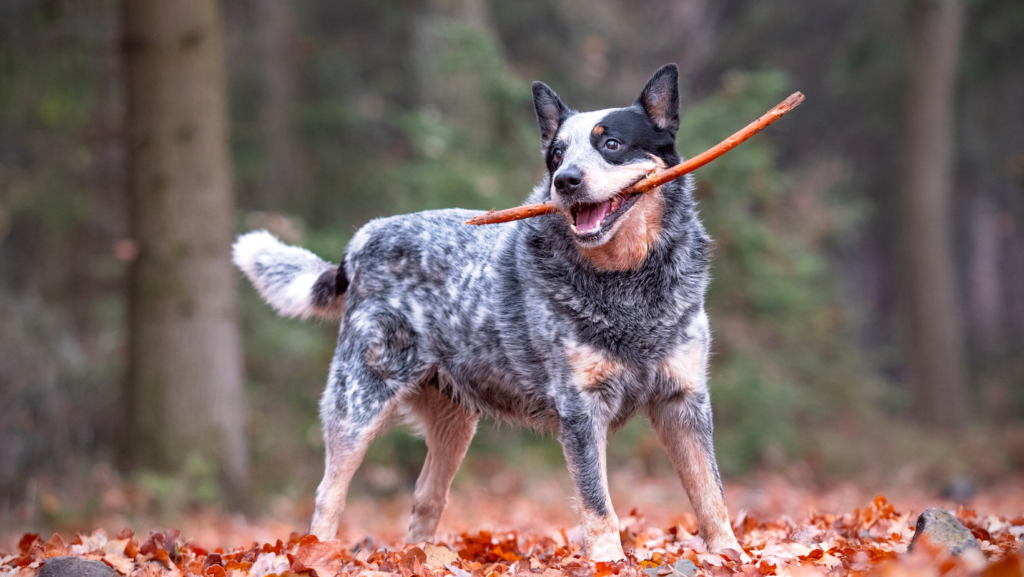
Since the Blue Heeler is intelligent, you need to engage in it during your spare time. Think of activities that stimulate the dog mentally triggering and physical response.
Buy a toy bone or a ball
that you will be throwing and commanding your dog to fetch. Make sure you are actively engaged as you play. Avoid tossing the toy with one hand while you are on your phone since you want to create a bond with the Blue Heeler. You wouldn’t want someone to be half-engaged with you, would you?
Tracking is another activity you can engage your dog in for mental and physical activeness. Your Blue Heeler will be able to remain responsive as it has to react to scents and commands fast.
If you don’t engage your dog in exercise through games and other activities, the dog gets bored. As a result, the dog will begin to misbehave as a means of remaining busy.
Regular exercising keeps your dog jovial and boosts its health. As the muscles react to commands and exercise, the bones remain strong. For this reason, the Blue Heeler survives better in a home with enough playing ground.
If you allow your Blue Heeler to play in your yard freely, make sure you have a dog-proof fence. The fence will keep the dog from wandering off to other people’s property.
Buy toys for your Blue Heeler Some Blue Heelers may have the urge to bite objects. If you buy a toy, you will have made a milestone in solving this problem. Ensure the toy you purchase is tough to avoid easy and fast tears.
With a Blue Heeler’s strength and activeness, a regular toy for other dog breeds will not do the trick. The dog will play with it and rip it up in one sitting.
Remember to buy a leash for your dog. As the dog plays with the toy, it may get curious and runoff. A leash will help you keep a close eye on the dog. Additionally, the leash will help you take control in case an unfamiliar dog joins the play session.
Socialization
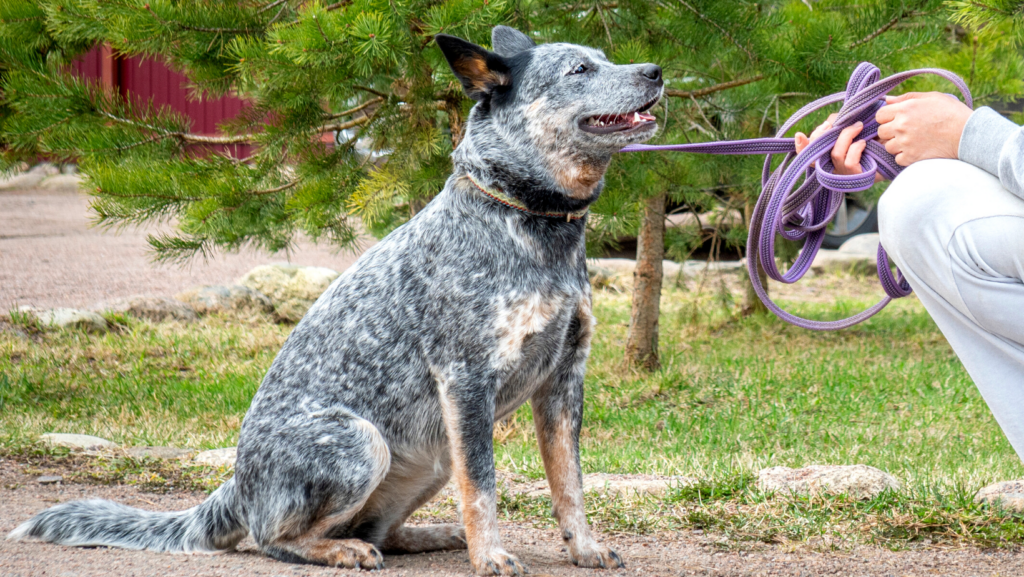
Blue Heelers are a little aggressive towards dogs they are not familiar with. For this reason, you need to create time for your dog to socialize with other dogs and unfamiliar people.
The Blue Heeler will instinctively desire and react accordingly to protect the owner. Begin training your puppy on how to interact with other dogs and people. Eventually, the dog will get social, and as an adult, it will not react aggressively to strange dogs and humans.
Take the dog on walks. Here, the Blue Heeler will get exposed to lots of people from all walks of life. The dog will also see and interact with other dogs from an early age. An environment with lots of people and other dogs will become a normal environment for the Blue Heeler, who will also learn how to interact with others.
Ask a few friends to come to your home. It is a perfect time to meet friends and family members who will be in the Blue Heeler’s life. Learning to interact and live with these people will reduce aggressiveness towards them.
Visit a dog park with your Blue Heeler. The park is an environment with lots of other dogs that your Blue Heeler will play with and create bonds.
Obedience training
Blue Heelers need obedience training since they are highly curious and tend to explore different activities. The instincts to chase a herd are in the dog, and it may end up chasing people, other dogs, or other animals in your home.
This character makes them prone to nipping and biting heels that they have easy access to. To curb this trait from an early stage, you must train your dog to follow commands and be obedient.
Conclusion on What age does a Blue Heeler calm down
Blue Heelers are not the perfect pet dogs, but they have an important role and help protect those close to them. It’s aggressive and active nature may seem like too much work, but it is for a good course. As seen in this article, there are ways you can help it to remain calm. If you can’t stand the way they are active, involve them in the above activities, and you will be good to go.
Forrest is a lover of dogs, the wild outdoors, deep mysterious conversations… and coffee. He is the owner of several websites, including Canine Weekly. He resides in Austin, Texas.

